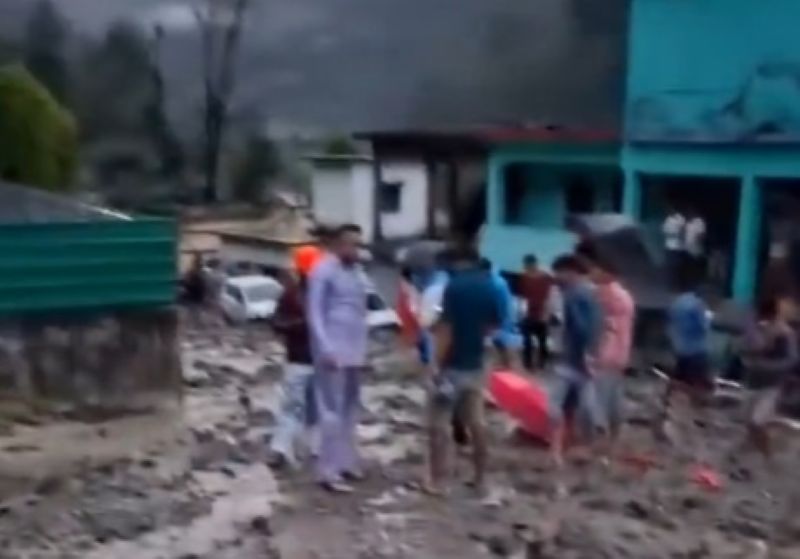
At least one person is feared to have died after a cloudburst hit the Chamoli district in Uttarakhand on Friday.
The Tharali market, Kotdeep, and the Tharali tehsil complex were hit hard as large amounts of debris swept through homes, the SDM residence, and other buildings, reported India Today.
Several vehicles that were parked in the complex were buried under the debris.
The streets across the town resembled temporary ponds after heavy water flow and debris hit the region.
Rescue and relief operations are currently ongoing.
State Chief Minister Pushkar Singh Dhami said the district administration and other officials have rushed to the spot to carry out relief work.
He wrote on X: “Sad news of cloudburst was received late night in Tharali area of Chamoli district. District administration, SDRF, police have reached the spot and are engaged in relief and rescue operations.”
“I am constantly in touch with the local administration in this regard and am personally monitoring the situation. I pray to God for everyone’s safety,” he said.
Recent natural calamities in the Himalayan belt
The flash flood triggered by a cloudburst in Chashoti village of Jammu and Kashmir’s Kishtwar district left at least 60 people dead this month.
A cloud burst and resultant massive landslide in Uttarkashi’s Dharali village in Uttarakhand earlier this month left at least four people dead.
What is a cloudburst?
A cloudburst is a sudden, copious rainfall. It is an aggressive rainstorm that occurs over a short period of time and is limited to a small geographical area, as per the Kurseong Municipality website.
Meteorologists say the rain from a cloudburst is usually of the shower type, with a fall rate equal to or greater than 100 mm (4.94 inches) per hour.
Generally, cloudbursts are associated with thunderstorms. The air currents rushing upwards in a rainstorm hold up a large amount of water.
During a cloudburst, more than 2 cm of rain may fall within a few minutes. They are called ‘bursts’ probably because it was earlier believed that clouds were solid masses full of water. So, these violent storms were attributed to their bursting.
There is no satisfactory technique for anticipating the occurrence of cloudbursts because of their small scale.


